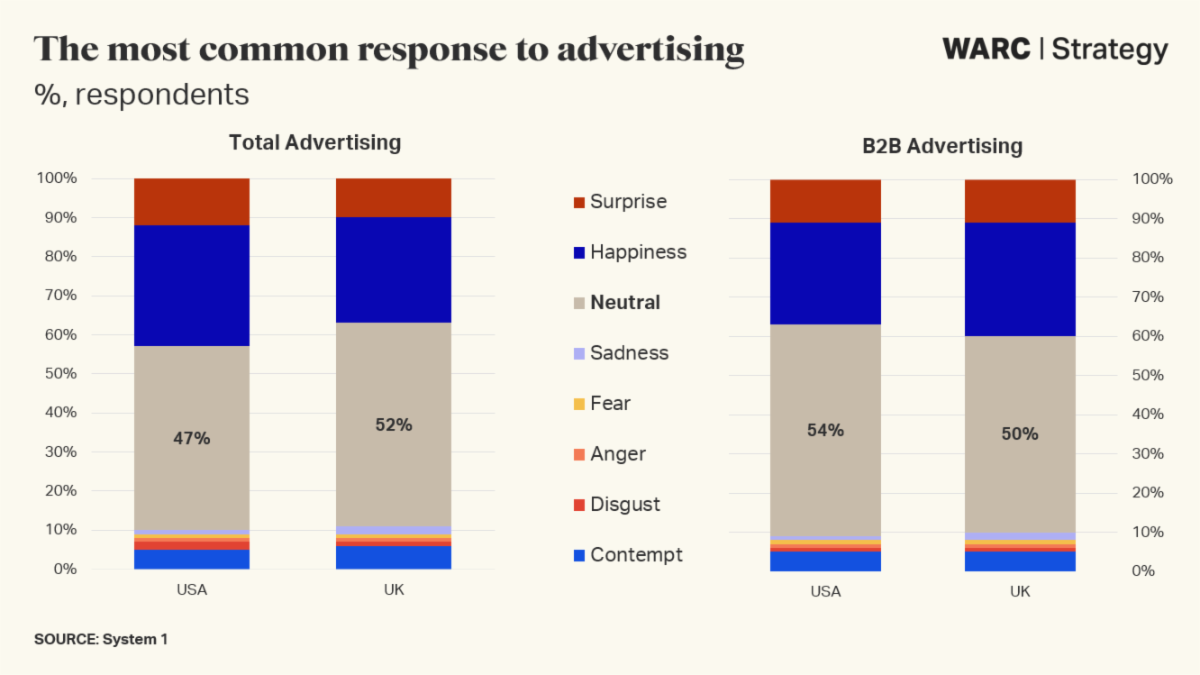|
WARC, the global authority on marketing effectiveness, has today released a report sharing the highlights of Creative Impact, one of the six content streams at Cannes Lions 2024. Creative Impact, now in its second year, is co-curated by WARC and Cannes Lions. Featuring 31 sessions across the five days of this year’s Festival, it highlighted the role of creativity in building resilient brands and delivering commercial results. Featuring some of the world’s top industry leaders and marketing researchers sharing their latest thinking, it shows not just why creativity matters, but when and how to apply it. David Tiltman, Chief Content and Customer Officer, WARC, said: “At Cannes Lions last year, Professor Scott Galloway claimed that “the era of brand is over”. We set out to prove him wrong. Our goal was to develop a 21st-century case for brand-building, with effectiveness at its heart. “What we found was that the power of a strong brand endures – and that is as true for emerging tech companies as it is for legacy consumer goods companies. But we are still learning about how best to build them in a rapidly changing media and consumer landscape.” Key takeaways outlined in Creative Impact Unpacked include:
Digital-native firms are leaning into brand. Brand for digital startups: Laura Jones, CMO, Instacart, provided a masterclass in brand-building for Silicon Valley. She advocates merging performance and brand budgets, and unifying the approach to metrics. Brands for ‘dual audiences’: For digital brands that act as platforms or intermediaries, Kofi Amoo-Gottfried, CMO of Doordash highlighted the importance of brand investment. For Doordash the focus is on both customers and merchants. Pecedent, not persuasion: Karen Crum, Partner and EMEIA Brand Strategy Leader, Strategy and Transactions, EY, called for better clarity on the definition of brand, saying that marketers can argue for brand-building based on precedent, rather than persuasion. Persuading people is hard. Showing them precedent is easier. A fresh focus on pricing as the outcome of brand-building is helping to make this case, according to Dr Grace Kite, founder of Magic Numbers.
The ‘age of average’, a trend by which everything starts to look the same, poses fresh challenges for brands that want to stand out: Brands succumb to bland: Analysis of assets by IPSOS and Jones Knowles Ritchie (JKR) found that 65% of them have weak to no associations with the brands that pay for them. Media choices matter: According to Karen Nelson-Field, Founder and CEO of Amplified Intelligence, the rise of short-attention media formats is making it harder for companies to stand out: 85% of ads do not meet the attention memory threshold of 2.5 seconds. Anything below that threshold will not drive salience and is essentially wasted spend, resulting in more ads getting misattributed to competitors.
More interesting than a cow?: System1 tested a video of a cow chewing grass. It found that 50% of UK ads underperform that video. New research from eatbigfish, System 1 and consultant Peter Field, found that for “dull” ads (those that evoke no emotional response) to elicit the same market share growth as more emotional or interesting advertising, brands would have to spend an additional $228 billion in the US or £10m in the UK. |
 |
How to burst the marketing bubble? The answer lies in better research and going back to the customer as the source of truth. Market orientation matters: Mark Ritson, Founder, Mini MBA, argues that marketers have lost sight of the customer. When marketers properly understand the consumer, factors like salience become very important. Between aspiration and reality: Yael Cesarkas, SVP, Executive Strategy Director at R/GA San Francisco, declared that briefs are saturated with unoriginal insights, and that crucial consumer insights exist between the gap between the customer’s aspiration and their reality. The paradox of synthetic data: Jon Lombardo and Peter Weinberg, co-founders of Evidenza, claim that synthetic data opens access to cheaper, faster research, even deeper insights about target audiences through digital twins of audiences in B2B and B2C. There are questions about accuracy and bias, but so far the techniques look promising in spaces where research is difficult, such as B2B.
Forecasts from WARC suggest retail media will grow 13.7% year-on-year globally to $153.3 billion. Media’s newest face: Retail media has attracted growing attention from brands eager to connect with shoppers near the point of purchase. The growing presence in Cannes of ‘commerce media’ owners, described as content-free sellers of advertising operating beyond conventional retail environments, like Uber, Chase and United Airlines signals the growing power of data-rich companies in the media space. Brands reappraise structures: The arrival of commerce media adds complexity to planning and blurs the boundary between brand-building and performance. Colgate Palmolive’s North America CMO, Diana Haussling, said the firm had striven to break down silos and build a new ‘consumer experience and growth’ division to handle cross media budgets spanning traditional and retail media. Creative, media and commerce converge: Combining discovery, connection and commerce, Jill Toscano, Head of Media, Walmart, explained how their fully shoppable campaign ‘RomCommerce’ was designed to be watched in two-minute segments on TikTok, displaying more than 300 products available to click and buy in the content. Complimentary access to the full Creative Impact Unpacked report, featuring all 11 trends outlined by WARC is available for one month here. |


